dual monitors for video editing
The best monitors for video editing in 2021
Included in this guide:
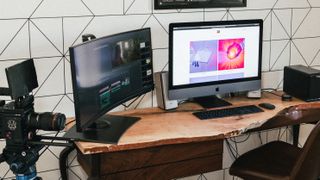
Make sure you have one of the best monitors for video editing before you dive into your creative process. Having the right display in post-production is just as essential as having the right GPU to power your computer and using one of the best video editing software or best video editing apps as you want to make sure that you're seeing things as accurately as possible.
Whether you're just reviewing footage, working on colour grading, or adding effects, you need a monitor that offers great colour reproduction with at least 95% DCI-P3 colour and great colour accuracy of delta E < 2 out of the box. Even backlighting is also important, so you're not seeing a contrast difference where there shouldn't be one. As is HDR support so you're getting a wider dynamic range, higher brightness levels, and better contrast. That's especially if you're recording in HDR – although, be warned, those with a high HDR rating will cost you a pretty penny.
Only the best monitors for video editing can deliver all those and more – like ultra HD or 4K resolution, which brings out more details and gives you more screen real estate. And, we'll help you find the ideal one for your needs and budget. Let's dig into which of these premiere monitors deserve your avid attention as you work on your final cut.
To get more from your monitor, you can pair it with our best headphones for video editing, or see what the best MacBook for video editing is. You might also want to see our choice of the best touchscreen monitors and the best portable monitors.
The best monitors for video editing available now
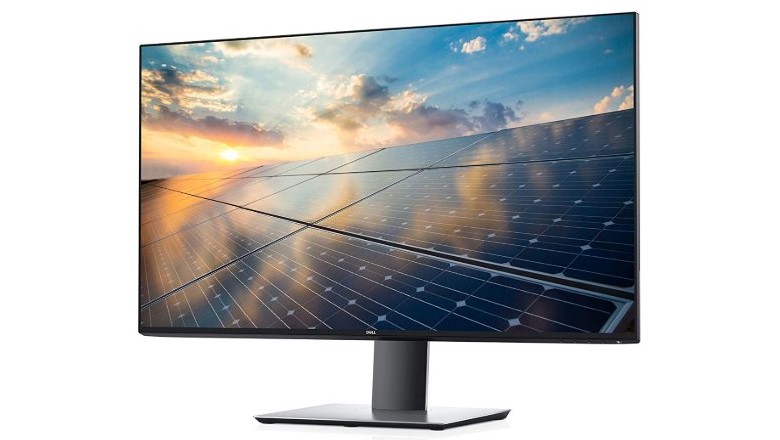

01. Dell Ultrasharp U3219Q
The best monitor for video editing for most people
Specifications
Screen size: 32-inch
Resolution: 3840 x 2160
Refresh rate: 60Hz
Inputs: 1 x HDMI, 1 x DisplayPort, 1 x USB-C
Brightness: 400 nits
Colour gamut: 99% sRGB, 95% DCI P3, 99% Rec.709
HDR: VESA DisplayHDR 400
Reasons to buy
+Excellent color accuracy +Great connectivity overall
Reasons to avoid
-Limited brightness
The Dell Ultrasharp U3219Q is a great balance of creative features and price, making it an ideal choice for most video work. The 32-inch size gives you a big canvas for tools and to see your footage clearly, while 4K Ultra HD resolution means there's tons of detail. For colour support, you're looking at 99 per cent sRGB and Rec. 709 coverage, as well as 95 per cent DCI-P3, to make it great for video especially. It's not especially bright, but that's no problem at all, because the uniformity is strong, which is exactly what we need.
You're not lacking in other features, either. HDR support is here, though it's HDR400, which is a bit too limited to really give you useful HDR playback. There's also USB-C connectivity, and four USB Type-A ports mean that it works well as a hub. You don't get as advanced pro-level colour features as on the likes of the Eizo ColorEdge CG319X (see further down), but the balance of image quality and price here is excellent.
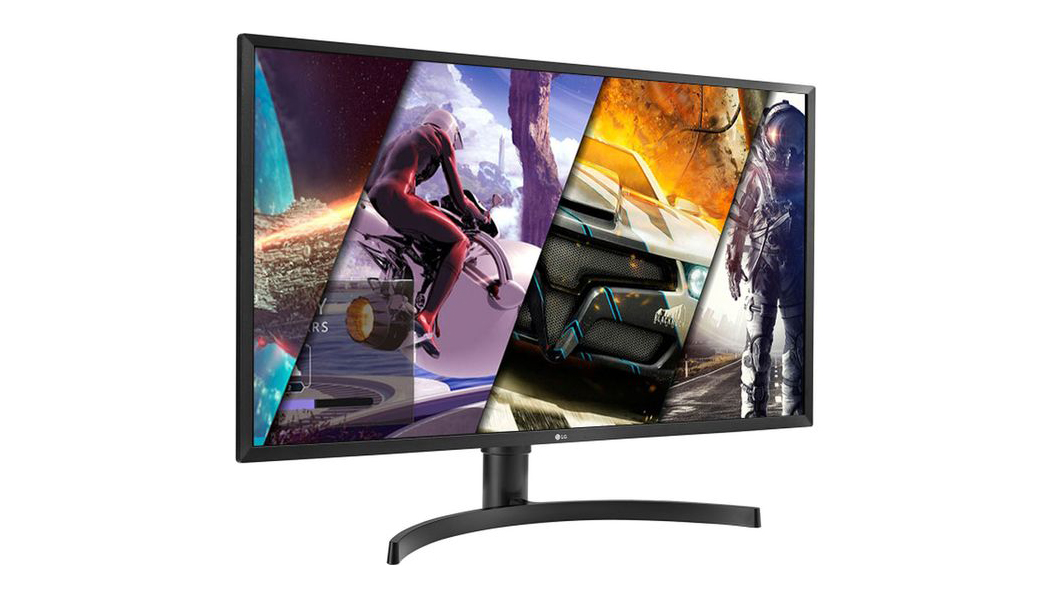

02. LG 32UK550-B
The best cheap monitor for video editing
Specifications
Screen size: 32-inch
Resolution: 3840 x 2160
Refresh rate: 60Hz
Inputs: 1 x DisplayPort, 2 x HDMI
Brightness: 300 nits
Colour gamut: 95% DCI P3
HDR: HDR10
Reasons to buy
+4K and DCI-P3 support +Excellent price
Reasons to avoid
-No frills
The LG 32UK550 delivers lots of video-friendly monitor features for the money. It's a 32-inch screen with 4K resolution, and offer 95% DCI-P3 colour gamut support – straight away, we're getting most of what we want for a lot less than some competitors. It uses a VA panel, which helps to keep the price down, and is actually great in terms of contrast, giving it strong black performance, though you lose colour accuracy when viewed at an angle easily when compared with IPS panels. It does suffer a bit more from reflective glare than the pro screens here, but if you can control the light, it won't be a problem.
For this price, you don't get much beyond the screen. No USB hub, or USB-C support. It technically does support HDR10, but the peak brightness of 300 nits can't actually do anything major with that, other than make the most of its 10-bit colour depth. But that's all fine – if you just need a good screen to edit on, and don't need the extras, it fits the bill.
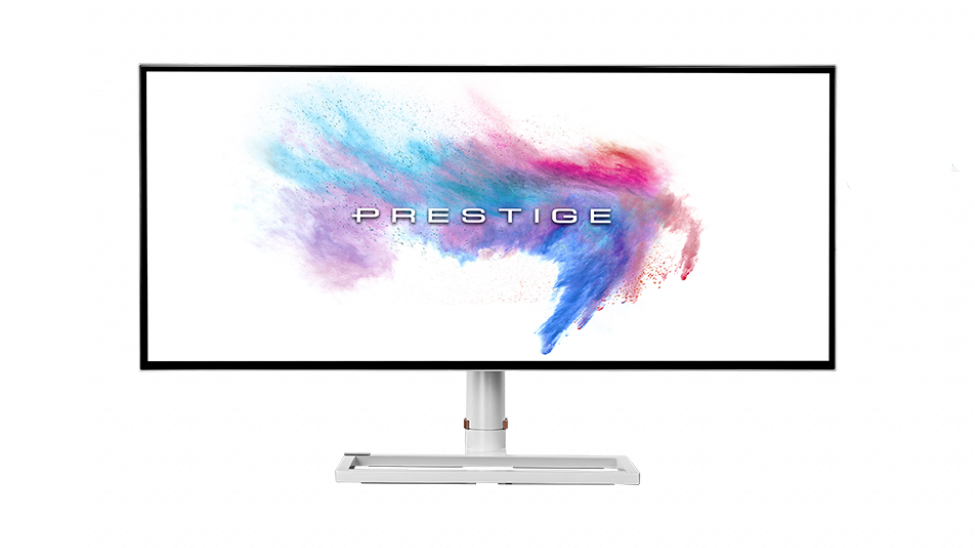

03. MSI Prestige PS341WU
The best ultrawide monitor for video editing
Specifications
Screen size: 34-inch
Resolution: 5120 x 2160
Refresh rate: 60Hz
Inputs: 1 x DisplayPort, 2 x HDMI, 1 x USB-C
Brightness: 450 nits
Colour gamut: 98% DCI P3, 100% sRGB
HDR: VESA DisplayHDR 600
Reasons to buy
+5K 21:9 panel +Excellent colours and good brightness
Reasons to avoid
-Cheap-feeling build
The MSI Prestige PS341WU comes from a company known for gaming tech, but this one is aimed squarely for creative work. The gorgeous 5K2K ultrawide display is a huge draw, because it gives you everything you need and then some. The 5120x2160 resolution means you can actually review Ultra HD video natively and still have space left over for tool palettes to make live changes. It also provides 98% DCI-P3 and 100% sRGB colour coverage.
The average brightness of 450 nits and peak brightness of 600 nits (making it HDR600 rated) is higher than most of the competition that isn't aiming squarely for HDR use – especially at this price. It's got plenty of useful connections too, including three video plugs, USB-C, and a selection of ultra-fast USB sockets. It doesn't have the pro-feeling build quality of something like the rock-solid Dell creative monitors, but that won't matter when you're deep into your timeline.
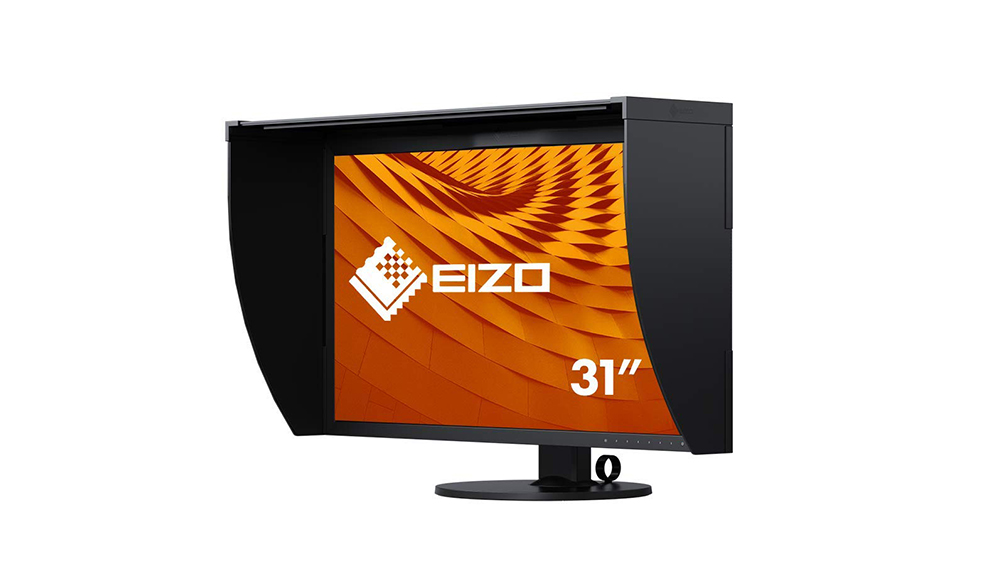

04. Eizo ColorEdge CG319X
The best monitor for video editing if money is no object
Specifications
Screen size: 31.1-inch
Resolution: 4096 x 2160
Refresh rate: 60Hz
Inputs: 2 x DisplayPort, 2 x HDMI
Brightness: 350 nits
Colour gamut: 99% AdobeRGB, 98% DCI P3
HDR: HLG HDR
Reasons to buy
+Industry standard presets +Remarkable color accuracy +Automatic AI calibration
Reasons to avoid
-Extremely expensive
The Eizo ColorEdge CG319X is designed for people doing pro work with no scope for errors. This is demonstrated everywhere from its range of broadcast and cinema presets – including Rec. 2020 and DCI-P3 with 98% colour coverage – to its DCI 4K resolution, which is slightly wider than the Ultra HD standard.
That 4096x2160 resolution is ideal if the camera you're using records in this format, since it means you can check the original footage at 1:1 pixels, no matter what format you might switch it to during editing. The display isn't especially bright, but it still supports HLG HDR – you just won't see the full scale of the the video's brightness.
Perhaps most importantly, it has a self-calibration system built-in, with sensor automatically checking its accuracy periodically, and correcting any issues without any involvement from you. You spend less time checking the screen and more time fine-tuning your footage. See our Eizo ColorEdge CG319X review for more why we rate this monitor so highly.
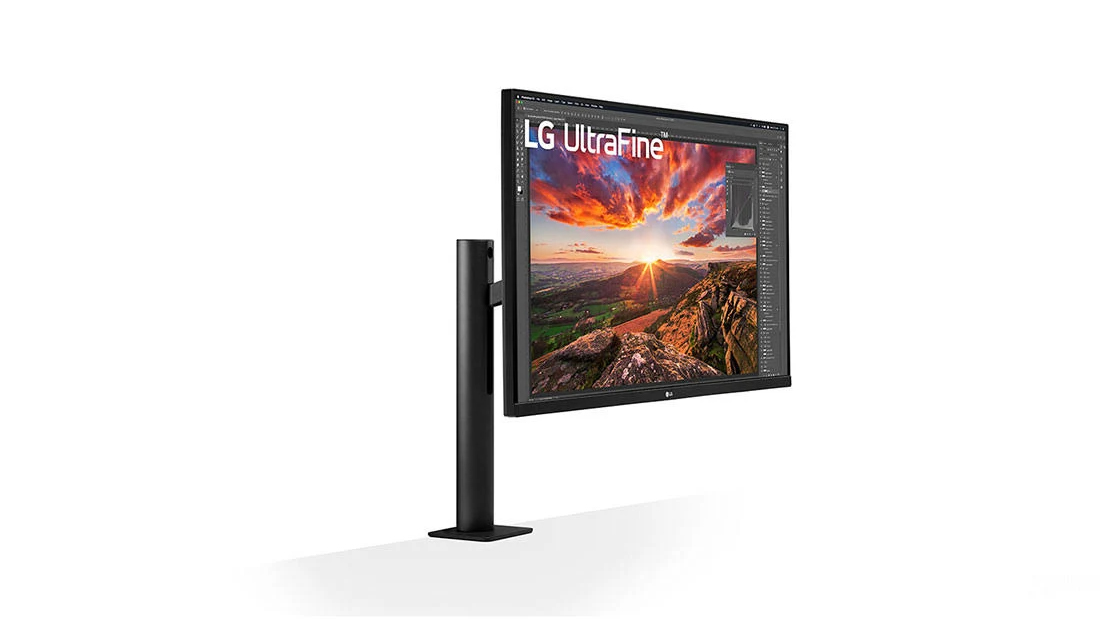

05. LG 32UN880 UltraFine Ergo
The most ergonomic display for video editing
Specifications
Screen size: 31.5-inch
Resolution: 3840 x 2160
Refresh rate: 60Hz
Inputs: 2 x HDMI, 1 x Displayport, 1 x USB-C
Brightness: 350 nits
Colour gamut: 95% DCI-P3
HDR: HDR10
Reasons to buy
+Excellent ergonomics +Affordable price
Reasons to avoid
-Sacrifices in brightness for the price
Novice and casual filmmakers and vloggers will appreciate the value the LG 32UN880 offers. It's among the most affordable 4K monitors out there that offer 95% DCI-P3 colour coverage, HDR10 support, and brilliant picture quality, as well as a decently sized screen. It also comes with USB-C connectivity and a hub for all your video editing tools.
However, it isn't just for beginners. Experienced editors looking for a more versatile setup will appreciate its extremely flexible mount and stand. Its C-Clamp and One Click Mount combo not only offers a more minimalist setup but also allows the monitor to move virtually whichever way you want. It lets you extend up to 180mm, adjust the height up to 130mm, tilt up and down 25 degrees, and pivot up to 90 degrees. The arm also swivels up to 280 degrees, which comes in handy especially when you're in a studio setup.
We only wish that it's brighter and has better HDR support to meet the exacting demands of pro-level filmmakers. However, the LG 32UN880 certainly has its place in the video editing world.
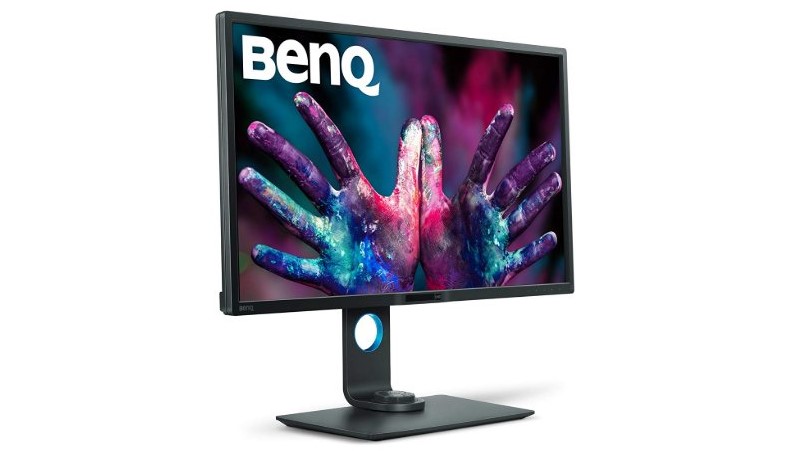
06. BenQ PD3200U
A great affordable video-editing monitor with a pro focus
Specifications
Screen size: 32-inch
Resolution: 3840 x 2160
Refresh rate: 60Hz
Inputs: 1 x DisplayPort, 1 x Mini-DP, 2 x HDMI
Brightness: 250 nits
Colour gamut: 100% Rec.709, 100% sRGB
HDR: none
Reasons to buy
+Large panel +Superb color accuracy
Reasons to avoid
-Basic design
If you want a 4K video-editing monitor with pro-level image quality and features specifically for creative use, but for a more affordable price, the BenQ PD3200U is excellent. The design is more basic than the expensive options here, but that's fine, because your money is going where you need it: on the 32-inch Ultra HD display and its strong image quality.
The PD3200U includes some specific display profiles that are great for video editing, including dedicated animation and darkroom modes. Its colour accuracy is excellent without calibration, so it can save you time as well as money.
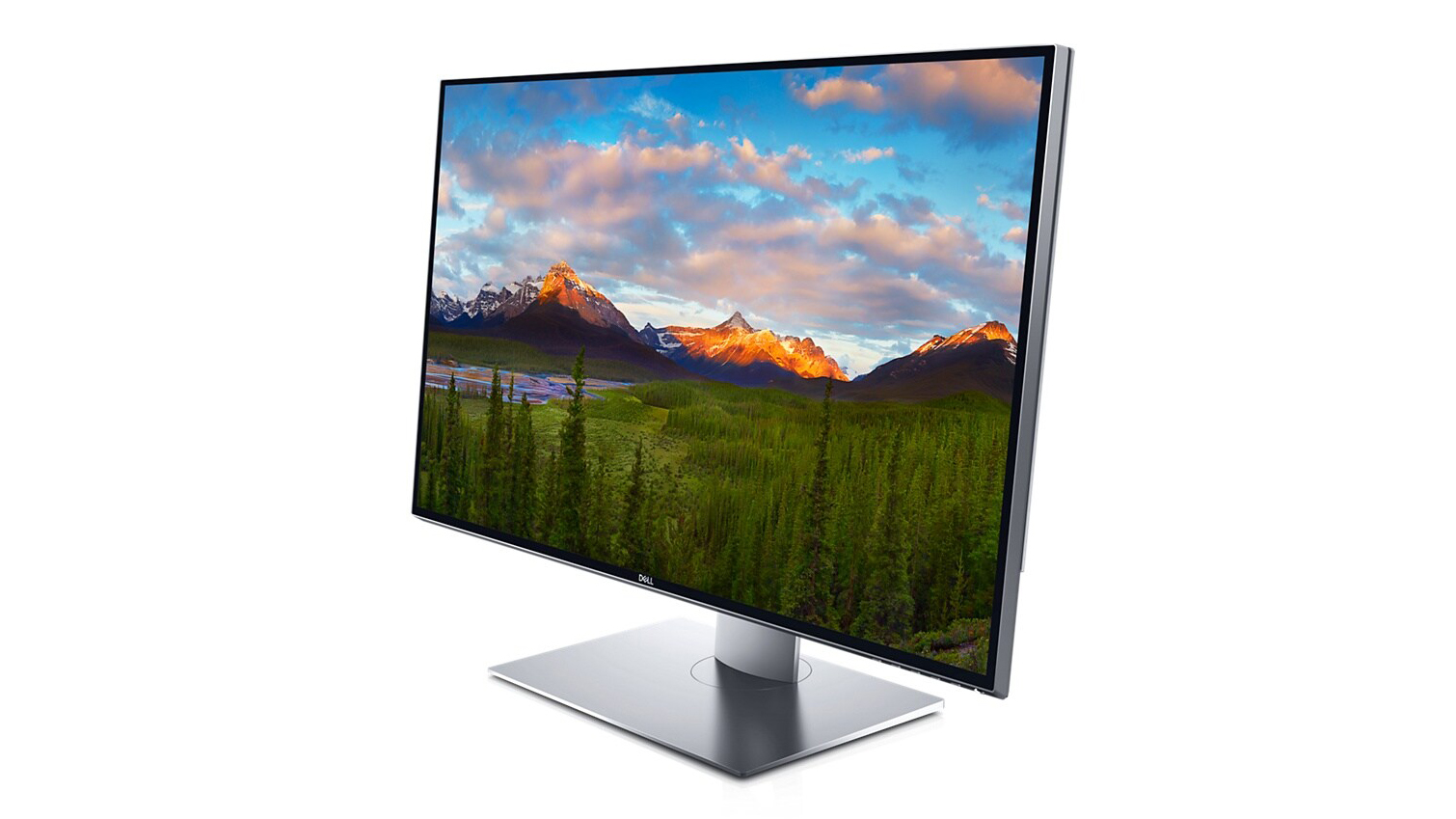
07. Dell UltraSharp 32 PremierColor UP3218K
The best 8K monitor for video editing
Specifications
Screen size: 32-inch
Resolution: 7680 x 4320
Refresh rate: 60Hz
Inputs: 2 x DisplayPort
Brightness: 400 nits
Colour gamut: 100% Adobe RGB, 100% sRGB, 98% DCI P3, 100% Rec.709
HDR: none
Reasons to buy
+Colossal 8K resolution +Fantastic colour coverage
Reasons to avoid
-So, so expensive -No HDMI 2.1
This is the best monitor for video editing if you're working with 8K or 6K footage and need a way to view it at full 1:1-pixel quality. We're not exactly swimming in 8K display options so far, but the Dell UltraSharp UP3218K makes sure that if you do get one, you're getting an absolutely top-tier screen in so many ways. It's about more than just the resolution – you also get 100% AdobeRGB, 100% sRGB, 100% Rec. 709, and 98% DCI-P3 colour coverage.
Connectivity is a little weaker – with no HDMI 2.1 port, the only connections for 8K support are the dual DisplayPort connectors, and there's no USB-C at all – but if you're pushing that many pixels, you're probably used to the idea that it's a bit of a hassle. And at 32 inches, it's a perfectly workable size too, despite the ridiculous number of pixels.
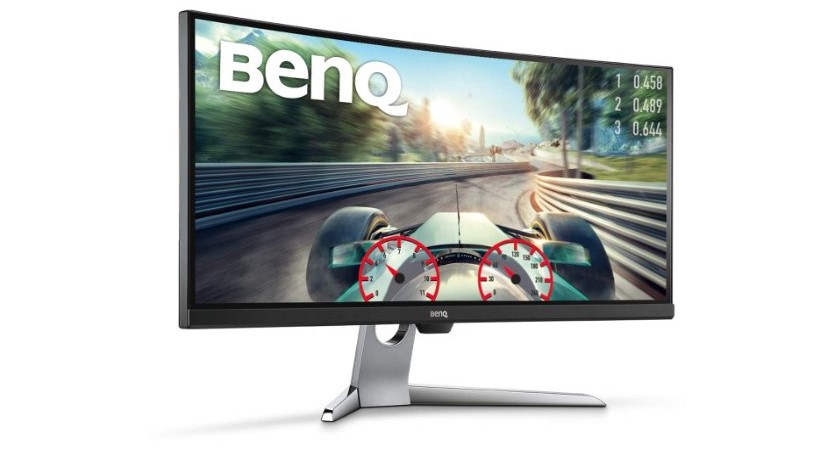
08. BenQ EX3501R
The best curved monitor for video editing
Specifications
Screen size: 35-inch
Resolution: 3440 x 1440
Refresh rate: 100Hz
Inputs: 2 x HDMI, 1 x DisplayPort, 1 x USB-C
Brightness: 300 nits
Colour gamut: 100% sRGB
HDR: HDR10
Reasons to buy
+HDR support +Fast refresh rate +USB-C connectivity
Reasons to avoid
-Bland design
The BenQ EX3501R is a great video-editing monitor despite its main job being for gaming. With strong colour reproduction that includes 100% sRGB support, plus support for HDR10 over HDMI too, it does double-duty well. That said, its average brightness of 300 nits, means you won't be dazzled by HDR brightness – still, BenQ describes it as a 'video enjoyment monitor', and it has the chops for that overall.
Even better – it's an ultrawide curved screen, which means you get extra width for your editing tools alongside full-height video playback, and being curved makes it all visible in a way that's easy on the eyes. And at 2.35:1, it's proportioned for cinemascope films, so playing them back fills the display. A USB-C port provides welcome easy connectivity, and though the 100Hz refresh rate won't be important for video editing mostly, it's nice if you want to get some gaming in too.
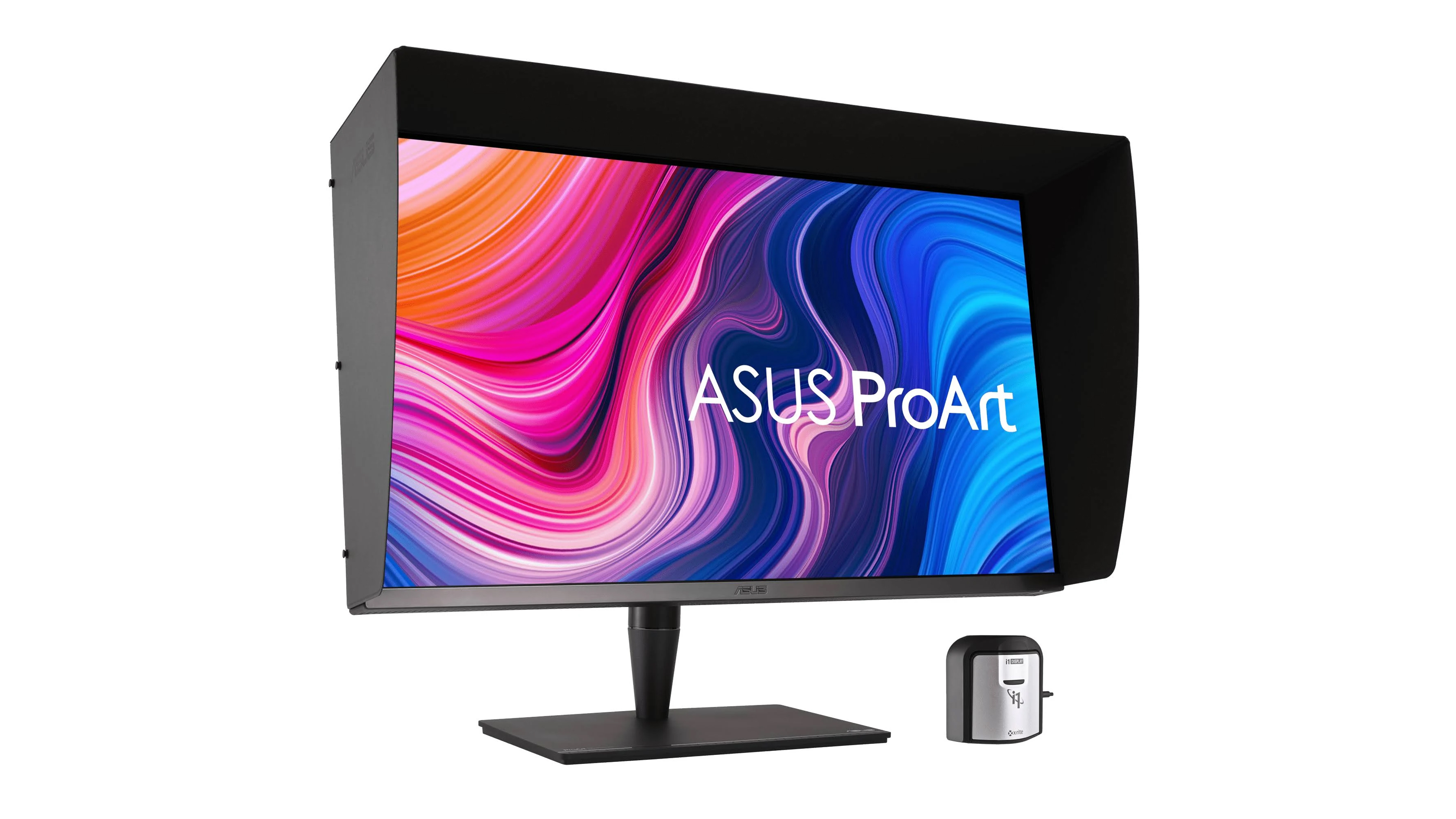
09. Asus ProArt PA32UCG-K
The best monitor for HDR video editing
Specifications
Screen size: 32-inch
Resolution: 3840 x 2160
Refresh rate: 120Hz
Inputs: 2 x Thunderbolt 3, 1 x DisplayPort 1.4 DSC, 1 x HDMI(v2.1), 2 x HDMI(v2.0)
Brightness: 1000cd/㎡
Color gamut: 100%sRGB, 99.5% Adobe RGB, 98% DCI-P3, 85% Rec.2020
HDR: VESA DisplayHDR 1400
Reasons to buy
+Impressive colour gamuts +1,600 cd/㎡ peak brightness
Reasons to avoid
-Extremely expensive
You don't need to exclusively film footage in HDR to take advantage of a true HDR display, but you do need to be a proper pro to justify getting one. HDR displays aren't the cheapest, and the Asus ProArt PA32UCG-K's steep price tag proves this. However, if you do have deep pockets, its DisplayHDR 1400 and 1,600 nits of peak brightness will blow you away.
Making it all the more worth your money is its Delta E < 1 colour difference and extensive colour space – apart from its 100%sRGB and 99.5% Adobe RGB, it also boasts 98% DCI-P3 and 85% Rec.2020 gamuts. The panel itself utilizes smaller LEDs that offer 1152 local dimming zones for higher contrast and deep blacks. There's plenty of input ports on hand as well, allowing you to spread out and really immerse yourself in your creative process. And, naturally, that 4K resolution takes care of displaying impeccable details.
This isn't for novice and budget video editors, but professional designers and content creators would be wise to invest.
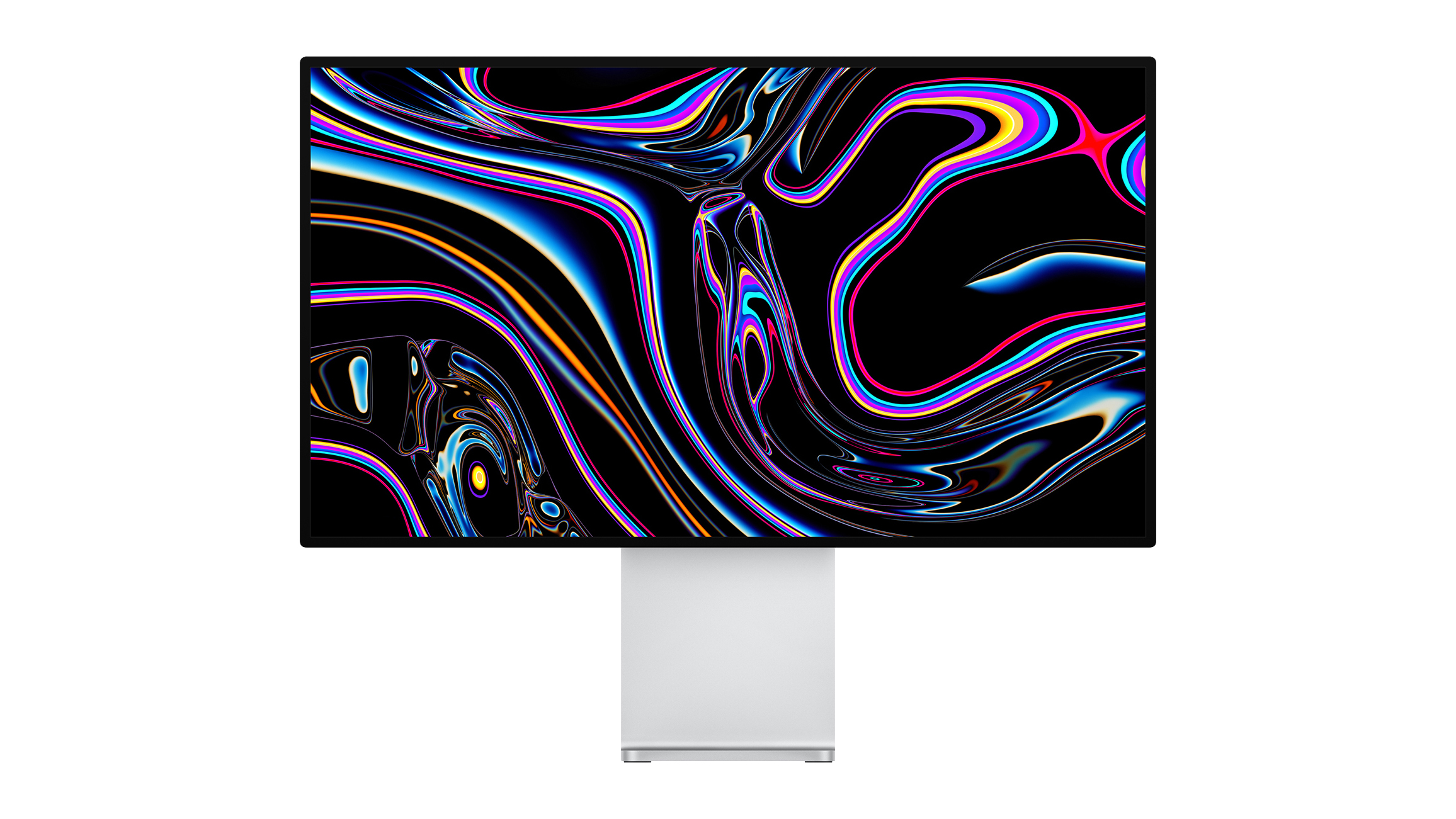
10. Apple Pro Display XDR
The best 6K monitor, and an HDR wizard
Specifications
Screen size: 32-inch
Resolution: 6016 x 3384
Refresh rate: 60Hz
Input: 1 x Thunderbolt 3, 3 x USB Type-C
Brightness: 1000 nits
Colour gamut: 100% DCI P3, 10-bit colour
HDR: XDR (Extreme Dynamic Range)
Reasons to buy
+1,600-nit peak brightness +Huge 6K resolution +Thunderbolt & USB-C connectivity
Reasons to avoid
-Very expensive… -…and it doesn't come with a stand
Apple's 6K display is a beast, aiming to be closer to a monitor in the pro film production sense, rather than a monitor in the 'computer screen' sense we've been using it here. It's intended to give you as close to perfect playback as you can get for the money (and, bear in mind, it's a lot of money). You've got a resolution of 6016 x 3384, which is enough for many 6K formats (though not quite the 6K full frame recording of a RED camera). Added to that is an incredible HDR peak brightness of up to 1,600 nits, with a typical brightness of 1,000 nits – and there are 576 individual dimming zones for backlight control, so contrast will be simply colossal.
In terms of colours, there are specific reference modes for DCI P3, sRGB, NTSC, BT.709, and many more. That includes a reference mode for 'Apple display', which will make it match a MacBook Pro for brightness, so you get a consistent look if you have them side by side. There's the option of a nanotexture effect on the screen to reduce reflectivity as low as it goes for monitors like this, too.
It comes with one Thunderbolt 3 port (meaning it can go at the end of a Thunderbolt chain, but can't be a Thunderbolt hub), plus three USB-C ports for connecting accessories. The downside to all this is that it's extremely expensive, and the price our widgets are pulling in here are just for the display… the official stand costs a further £949/$999/AU$1,699. You can also get a VESA mount adapter, if you prefer.
Read more:
- How to calibrate your monitor
- The best 4K monitors
- The best cheap 4K monitor deals

Cat Ellis is a technology journalist , and has been for the last 11 years. She currently works as the fitness and wellbeing editor at TechRadar, as well as writing for other design and tech titles in her spare time.
Related articles
dual monitors for video editing
Source: https://www.creativebloq.com/buying-guides/the-best-monitors-for-video-editing
Posted by: berryexisparbace.blogspot.com

0 Response to "dual monitors for video editing"
Post a Comment